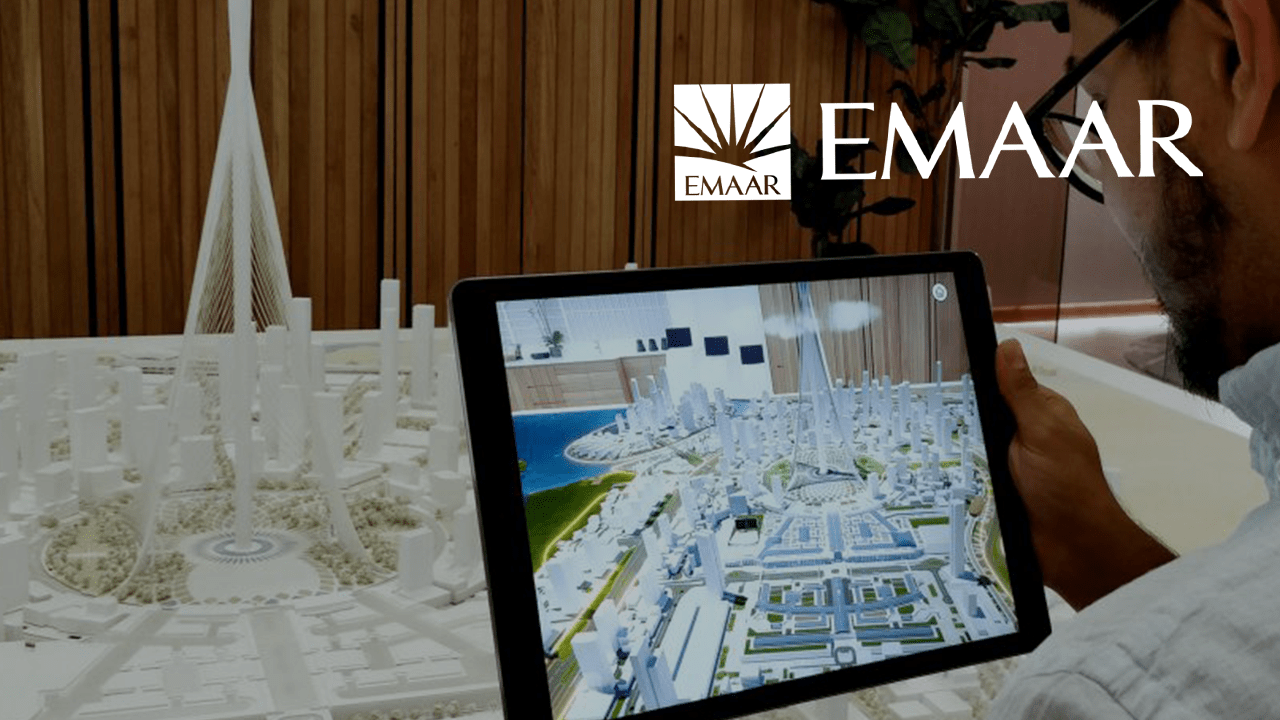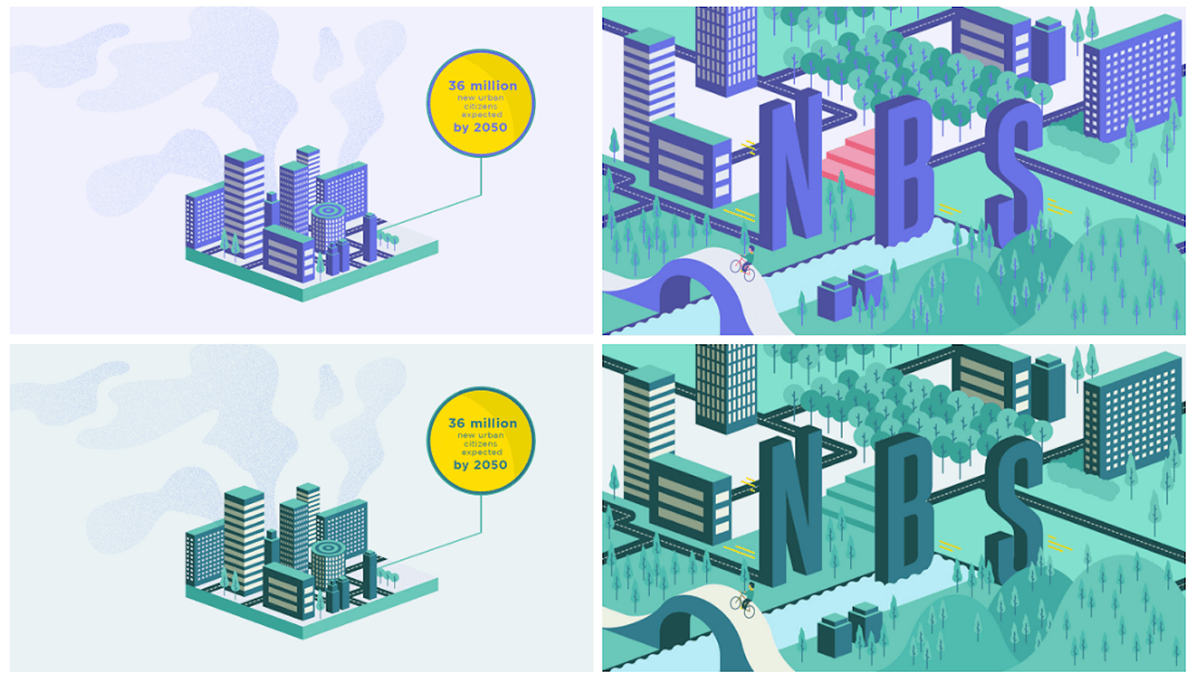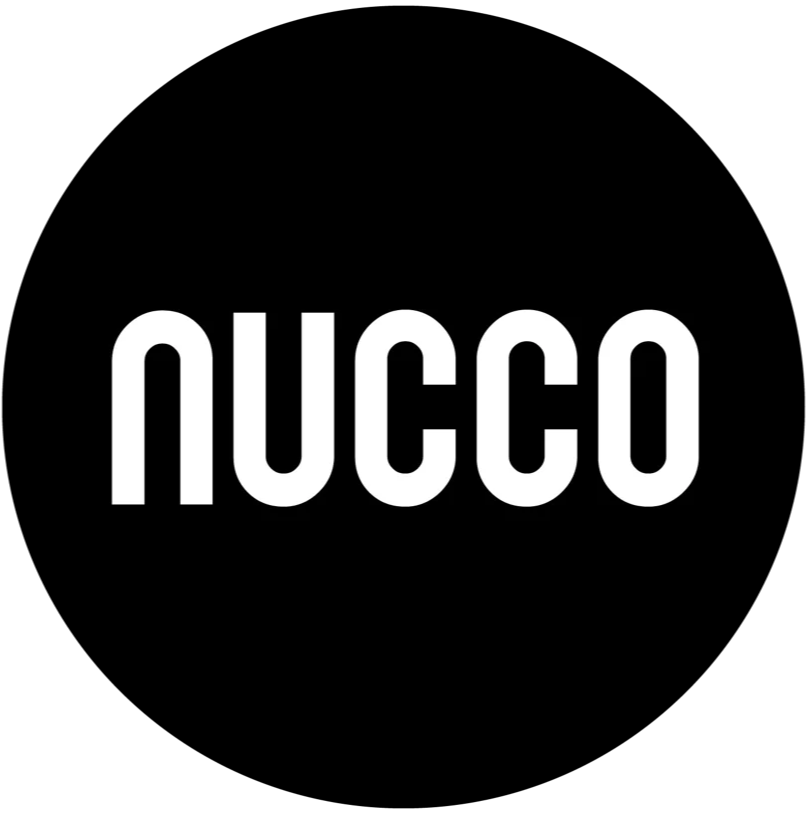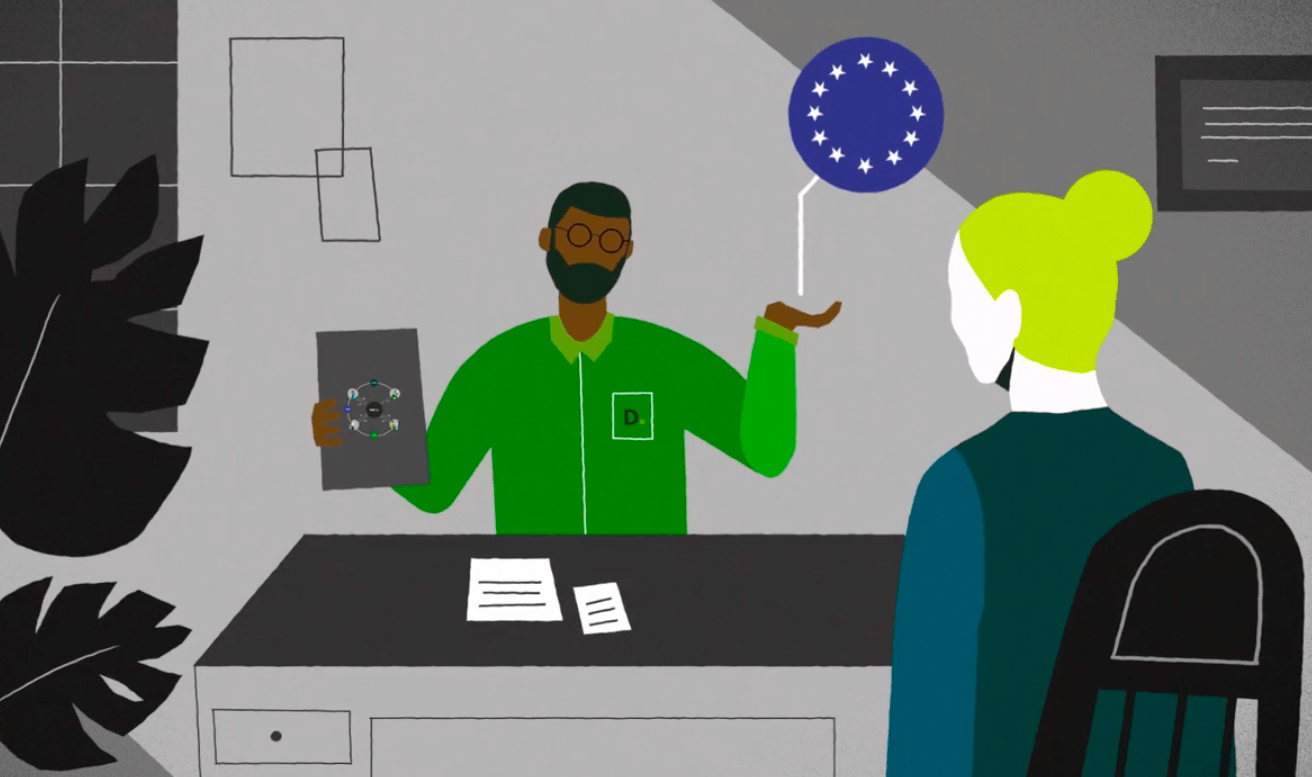HOW-TO LEVERAGE INTERACTIVE CONTENT FOR YOUR COMMUNICATIONS

Exciting interactive solutions to grab your audience’s attention.
Business is changing before our eyes at lightning speed. With the sheer amount of content out there overwhelming audiences day in, day out, standing out from the crowd has never been so key for successfully transmitting messages – whether that’s internally or externally. Enter technology. As companies look for increasingly powerful new ways of engaging with their audiences, interactive content holds the key to limitless and exciting messaging that’s memorable, unique, and helps keep your messaging at the forefront of people’s minds.
In this third article in our ‘Back to Work’ series, we look at four technological options for creating interactive content for your communications.
Augmented reality: life as we know it, but better
First up, if you’re looking to create an immersive digital experience for your audience that alters and improves upon existing reality – showing the art of the possible – consider incorporating augmented reality in your communications. Augmented reality involves adding computer-generated information onto what’s actually in front of you, either for entertainment purposes or to help audiences visualise the potential of a space.
One famous example is furniture giant IKEA, who created an app that uses augmented reality to allow customers to see how pieces of their furniture would look in their own home. Open up your phone’s camera, point it at your living room, and see which new armchair would fit best with your space and existing decor. Using augmented reality in your communications can help your customers better understand your product, and interact with it before they press ‘buy’, increasing the likelihood of purchase, and reducing the risk that the product is returned.
Global property developer Emaar approached Nucco looking to provide potential investors with an early preview of their latest development. We leveraged AR as well as 3D printing to create an app to accompany a 4 x 3m model of the planned development. This allowed the potential investors to get an authentic as possible feel of the buildings, despite the development spanning 300 buildings in 11 different districts.

Interactive film: keeping it personal
If you want to grab your audience’s attention from the get-go, interactive film can communicate your message in a highly powerful and personal way. Audiences are very familiar with traditional film as a medium to convey messaging, but if it’s not exciting enough, it’s easy to zone out. Interactive film, on the other hand, invites the viewers to participate in the storyline, helping them to better absorb the information transmitted – and to retain it long after the credits have rolled.
During an interactive film, the viewer has to make decisions based on what’s happened, such as deciding what to say to another character, or which path to take. If they’re not engaged and don’t take part, the video won’t move forward, so this medium is worth considering if you’re conveying hard-hitting information.
One example of a successful interactive film is our work with Brighton-based charity Grassroots Suicide Prevention. In the UK suicide is the leading cause of death for men and women under the age of 35 – yet most of us have very little idea about how to actually help a suicidal person. To rectify this, Grassroots Suicide Prevention got in touch for help creating an interactive piece that would tackle this issue head-on. The result? Real Talk About Suicide, an interactive film with a mission: to educate the public about the causes of suicide, destigmatise the whole subject, and set out ways in which we can all step in where we see the danger signs to help prevent people taking their own lives.
Interactive experiences: when play-time gets serious
The more fun you can make your content, the faster the message sinks in. And the more interactive things are, the longer that message will stick. We associate online games with children and gamers, but they also present an effective way to communicate information in a way that engages and excites your audience – and is a surefire way to stand out amongst the noise. Appealing to your audience’s sense of fun can turn typically drier topics into something that’s enjoyable as well as informative.
When the EU Framework Programme for Research and Innovation wanted to spread the word about building sustainable societies, they approached Nucco for help. The idea here was to develop a platform for stakeholders that conveys and promotes nature-based solutions to modern issues, conveying the Think Nature ethos and evolution to more than 30 different international companies and EU Commission stakeholders. A big task, with multiple perspectives to take into consideration.
Nucco created an interactive game, putting participants in the role of mayor of the fictional Greentown. They then take part in five challenges through which they decide how to tackle a problem using nature-based solutions. They are scored on their effort, and are presented with a case study illustrating the different policy approaches in action. This interactive approach manages to inform and entertain at the same time, helping ThinkNature to build more sustainable societies through interactive educational experiences.

Virtual reality: ramping up the response
Virtual reality is no longer just about movie thrills and gripping gaming experiences. It’s emerging as a key ingredient in helping create results-driven interactive content. And the potential is as great whether the goal is conveying vital public service messages or promoting a unique new product line or service. Access to VR has never been easier, with headsets and other equipment becoming cheaper and easier to use. Incorporated in the right way, VR provides an encouraging ROI for businesses, and helps participants remember the information that has been communicated to them. As an indication, participants trained using virtual reality are up to 4 times more focused during training than their e-learning peers, and 1.5 times more focused than their classroom peers.
When transmitting potentially life-saving information, retention rates are more important than ever. When Resuscitation Council UK approached Nucco, they wanted to come up with a revolutionary new way of teaching life-saving CPR. We created an interactive CPR teaching experience, using cutting-edge digital technology to simulate an actual crisis. The idea was to place people in ‘real-life’ emergency situations where they feel the stress of having to save someone’s life with the clock-ticking – demonstrating the life-or-death importance of their decisions and building their confidence in the process. In tests with schoolchildren, teenagers’ confidence in performing CPR increased from 38% to 85%, showing just how powerful VR can be as a vital learning tool.

Teaching of a different kind also underpinned Nucco's work with EDF Energy to explain to a non-specialist audience the complex science between the production of nuclear energy.
Our job was to help provide EDF Energy’s stakeholders and the general public with easy-to-understand yet informative digital content – words and images that would tell a highly complicated story in an extremely accessible way. Virtual reality allowed us to take viewers on an otherwise impossible journey, giving them a ringside seat at the core of a nuclear reactor, by shrinking to the size of an atom and traveling deep inside.
Using virtual reality and CGI animation, the solution allowed viewers to watch nuclear fission happen before their very eyes, and explore how this energy is used to turn the turbines of a power station, producing electricity for their home. The VR film has now been viewed more than 11 million times, demonstrating the potential of VR for business.
Making use of technological developments
Whether your business is looking to showcase products to consumers in original ways, communicate technical topics to the general public, or bring typically dull topics to life, the wealth of technological developments to choose from means there’s something for everyone. Old-school advertisements and social media campaigns have their place, but if you’re really looking to push boundaries and create cutting-edge communications, interactive solutions are the way forward.
Interested in finding out how to leverage interactive technology in your communications? Get in touch with us today.


